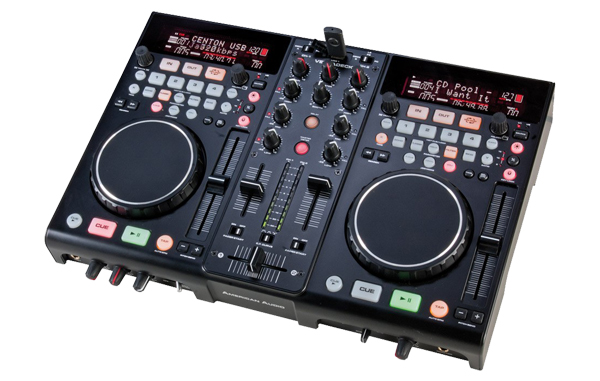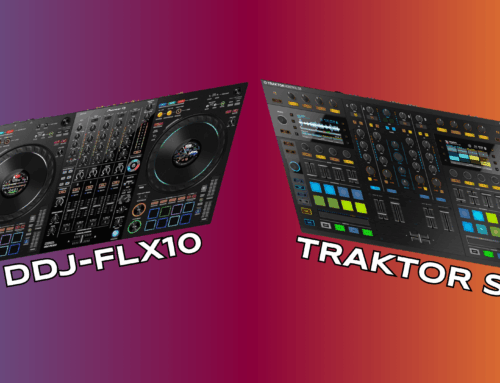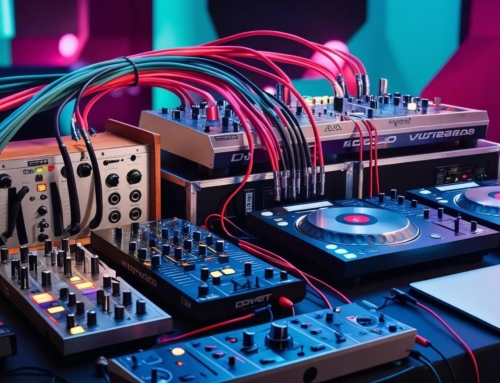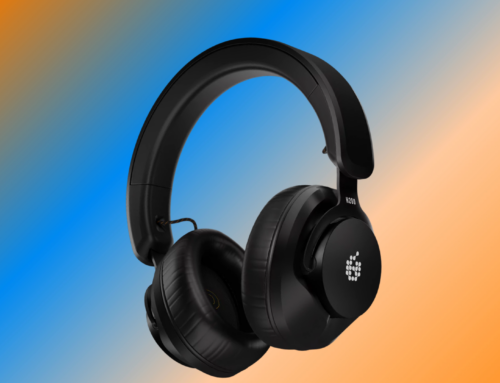 With the rise of DJ controllers and mixers providing varied and adaptable sources of playback, American Audio has recently released the Versadeck, a combination MIDI controller, 2-channel mixer, sound card, and USB playback device. Combining all of these things into one package seems like it would make for a great new product that’s similar to other MIDI controllers out there, but now with the added benefit of USB stick playback! Giving it a spin, however, I found that this product is really no greater than the sum of its parts, and the parts aren’t exactly mindblowing either.
With the rise of DJ controllers and mixers providing varied and adaptable sources of playback, American Audio has recently released the Versadeck, a combination MIDI controller, 2-channel mixer, sound card, and USB playback device. Combining all of these things into one package seems like it would make for a great new product that’s similar to other MIDI controllers out there, but now with the added benefit of USB stick playback! Giving it a spin, however, I found that this product is really no greater than the sum of its parts, and the parts aren’t exactly mindblowing either.
Immediately after opening the box, I was most excited to find out how the Versadeck stacks up against other MIDI controllers I’ve used. Since I’m a Traktor fan, I went over to American Audio’s website and downloaded the official Versadeck Traktor mapping and dove right in. After a bit of frustration and wondering why things wouldn’t work properly, I discovered that the included PDF wasn’t even right; functions listed in the map of things the Versadeck should do in Traktor weren’t actually even inserted into the mapping file (I checked). While it’s true that the Versadeck’s plethora of MIDI-assignable buttons and Traktor’s easy MIDI-learn mapping tool make fixing this problems a little easier, I was really disappointed that the out-of-the-box solution was so inadequate.

American Audio Versadeck
Switching over to VirtualDJ, however, things get a little better (ironically). Although things seem to be mapped pretty reasonably, there is somewhat of a learning curve even for experienced controllerists because the labels on the controller are not always present, and even when they are, they sometimes don’t correctly correspond to what is on-screen. After a fair bit of playing around, however, I was relatively pleased with the Versadeck’s performance in VirtualDJ. It’s no worse than the standard MIDI controller on the market, but it’s really not much better, either.
One attractive feature of the Versadeck is its inclusion of 4 on-board effects: echo, flanger, filter, and brake. That’s a pretty awesome concept in a modern MIDI controller; usually, you have to invest in a dedicated mixer to get that kind of control. When I launched the effects in PC mode, however, I came to the disappointing realization that those effect buttons don’t actually do anything to the audio when the controller’s in MIDI mode, they merely control software effects, like any other controller. To operate the effects built into the Versadeck, you have to be running in USB drive mode.

“Only-in-USB-mode” seems to be a pretty universal requirement among the Versadeck’s most attractive features, leading me to think that this unit was designed as a USB-stick CDJ (USBJ?), and MIDI integration was merely an afterthought. When operating in USB audio mode, the true potential of the Versadeck is unleashed, and I’m happy to report that everything works! Hotcues and loops take some getting used to but are pretty effective when you get used to them. There is also a jogwheel mode which centers transport around a cue point for scratching into a song’s intro. Crossfader start is an option I wasn’t expecting on a deck like this, and I’m not sure how much use it will get among the Versadeck’s target audience. Another questionable feature is the relay function, which alternates playback between the two decks and allows the DJ to go take a break, because that’s what DJing is all about.
Even in USB mode there are a couple of places where the Versadeck disappoints, however. The first is this inability to monitor the mix and cue. Instead, you are granted the ability to monitor each deck individually or a combination of the two. There’s a subtle, but very important difference there. Essentially, you are given only a way to listen to what’s on cue, and if you don’t have booth monitors, you can’t get a true representation of the mix you’re putting out. Also, the USB mode is highly susceptible to things going wrong. In most cases, hitting the pause button inadvertently is the one and only mistake to avoid at all costs. With the Versadeck in USB mode, there are about 5 such buttons.
Lastly, I was extremely frustrated with the fact that I couldn’t plug in my hard drive and push play. Instead, you have to format your hard drive, add music, and create a music database with American Audio’s propriety database-building software. I don’t know too many DJ’s who are willing to screw with their file system, much less format their hard drive for one piece of gear. This wasn’t an issue at all with the Numark MixDeck, which was a truly plug-and-play experience.
Because I’m completely in love with my VMS4, I was more than willing to give American Audio the benefit of the doubt when it comes to the Versadeck. It really does look like a beatmixing machine, and the list of features is quite impressive. While there are plenty of things about the Versadeck that work pretty well, there also seem to be headaches and disappointments left and right. If you’re willing to sit down with the Versadeck and Traktor for a couple of hours to make a mapping file, and willing to take the time to set up a hard drive, what you will get is a MIDI-controller/mixer/soundcard/USBJ that performs at a satisfactory level. Just don’t expect to be blown away.




